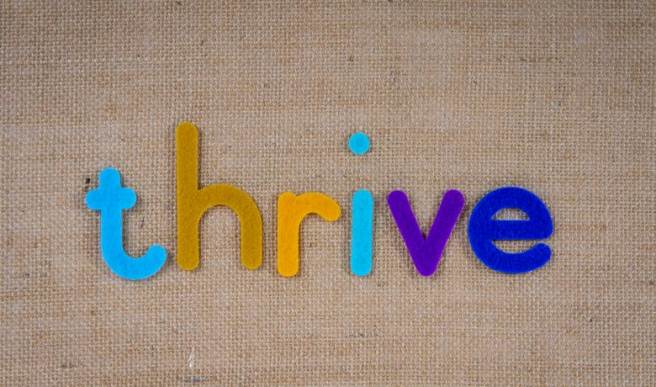Strategies for overcoming funding constraints and thriving in research

Researchers spend precious time writing grant proposals, and not all of them get approved. In particular, researchers at a crossroads, or those who have experienced changes or moves in their career (re-entry into research, changing cities, countries, or labs), might find it extra challenging to secure research grants.
In a worrying trend globally, many countries, from Brazil to South Africa to the USA, are introducing budget cuts that impinge upon research funding. While politicians and policymakers fight over government spending, your work as a researcher must carry on. But with budget cuts come fewer funding opportunities, which is making this space increasingly competitive.
Should such constraints limit your research? The answer is a resounding NO! In this post, you will learn different ways to overcome hurdles to secure funding and even identify offbeat ways to increase your and your lab’s resourcefulness.
Improve your odds of securing funding
1. Improve your grant-writing skills
Preparing a research grant proposal is time consuming because these applications are detailed, technical, and complex. A study focusing on Australian researchers submitting proposals to Australia’s National Health and Medical Research Council revealed that preparing or resubmitting a research proposal took an average of 34 days of researcher time per proposal. And that’s not the worst news. The success rate was a dismal 21%!
To face this intense competition and emerge successful, you should invest time in learning how to write high-quality grant proposals. For this, consider finding a mentor to guide you on this journey. Discuss with peers and senior faculty members to find out what they do differently to achieve funding. Further, participating in grant writing workshops and training can stand you in good stead. Several resources such as courses and handbooks are also available online.
2. Engage with stakeholders
Engaging with stakeholders such as policymakers, industry partners, and community organizations can help you demonstrate the relevance and potential impact of your work, which may attract additional funding or support.
3. Build a strong reputation
A track record of successful research projects and publications can enhance your credibility when applying for funding. Focus on building a strong portfolio of work, which will enhance your success rate with funders and collaborators over time.
In addition, you should address potential study limitations that may affect the eligibility for funding. Some tips are as follows:
-
Follow rigorous sampling techniques and statistical approaches that overcome biases and control for confounding variables.
-
Obtain approvals and consent as necessary.
-
Ensure that your proposal is free of plagiarism.
Look beyond traditional funding agencies
Relying on a single funding source can be risky. You can carefully select which grant opportunities to pursue based on your research interests, expertise, and likelihood of success.
If you are unable to secure funds from the traditional funding agencies in your field, you might need to explore alternative funding models. Be open to diverse funding sources, even those offering smaller grants.
1. Explore crowdfunding
When you hear the word “crowdfunding,” do you picture entrepreneurs rather than researchers? Well, that picture is changing. Crowdfunding platforms like Kickstarter and Crowdfunder have long enabled scientists to launch products and not their research. However, other crowdfunding platforms like Experiment and Consano provide capital to finance research projects, especially to early-career researchers.
Tips to seek potential donors are as follows:
-
Showcase and promote your project on social media.
-
Explain your project in simple terms, free of jargon.
-
Keep a realistic and reasonable budget.
2. Seek institutional support
Many universities and research institutions offer internal funding opportunities to support faculty and student research. Find out about these resources at your institution.
3. Identify other sources of funding
You may even look for corporate sponsorship and industry partnerships for specific projects. Exploring government grants, private foundations, and philanthropic causes aligning with your research could yield valuable leads as well.
4. Collaborate with other researchers
Collaboration allows researchers to pool resources, expertise, and funding. By partnering with colleagues from other institutions or disciplines, you can access additional funding streams and increase the impact of your work.
Other ways to tide over funding constraints
1. Maximize existing resources
Hope Jahren, currently a geobiologist at the University of Oslo in Norway, went through a financial crunch in her early research career. Not to be deterred, she optimized her lab’s resources by following tactics like gathering supplies from the Salvation Army and surplus warehouses, repurposing older materials, and acquiring equipment from a lab nearing shutdown. Her careful management proved indispensable during that financially demanding period for her lab.
Taking a leaf out of her book, you can try to make the most of existing resources by leveraging equipment and facilities available at your institution, sharing resources with other research groups, and minimizing unnecessary expenses.
2. Focus on cost-effective research methods
Further, you could explore cost-effective research methods such as using open-source software, conducting surveys or experiments online, or collaborating with researchers in low-cost settings.
You might be aware that India successfully landed a spacecraft on the Moon recently at a fraction of the budget of other space missions. In fact, the Indian Space Research Organisation (ISRO) is renowned for its low-cost approach in its projects. Comparisons of ISRO’s missions’ costs with the costs of making a blockbuster movie aside, what can we learn from them?
ISRO staff are known to have a strong budget-conscious mindset (did you know that researchers would carry satellite or rocket parts on bullock carts, and later bicycles, to the launch site?). They are known to focus on simplifying the system, maximizing outputs, and avoiding wastage. That being said, they are not risk averse. You can still feel free to take calculated risks.
In addition, you and your lab can be more independent by avoiding overreliance on external or imported inputs. Think local and learn to improvise!
3. Diversify revenue streams
Researchers can explore opportunities to generate revenue from their research outputs, such as licensing intellectual property, consulting, or providing training and education services.
Wrapping it up
Repeated rejections of grant proposals can bring you down. But don’t give up, trust yourself, and have patience. The approaches and tips presented above have long been used by researchers, and I hope you will find them useful too. Some additional pointers are to consider downsizing and/or limiting yourself to just a couple of key projects until sufficient funds are obtained, and to take time off from other responsibilities such as teaching to avoid losing traction on grant-writing.
“Where there is a will, there is a way,” the adage goes. If you don’t have the resources to fund your research but you have the will to persevere, you now know the various ways by which you can still triumph in the face of financial constraints!




